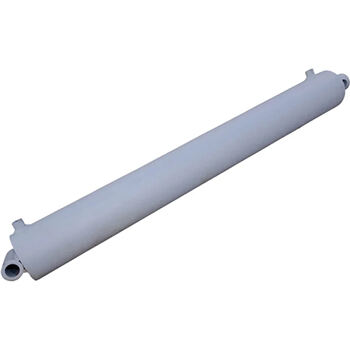Hydraulic cylinders are one of the most important components that need regular maintenance if you have a lot of heavy machinery to deal with. Making sure that it works properly is vital for equipment performance. Repack the cylinder as necessary to achieve this. So although this process looks complex, with the right help and resources it can in fact be done effectively. This all-inclusive guide on repacking a hydraulic cylinder will take you through the process step by step, outline common mistakes to watch out for, go over what essential tools are needed and offer troubleshooting tips along with an in-depth beginner video tutorial.
How to Repack a Hydraulic Cylinder: Step-by-Step Guide
First of all it is necessary to remove the hydraulic cylinder from an equipment very carefully and isolate this one completely in relation with the rest of the hydraulics system. Park it on a buffed and dry place so that no grime, trash or humidity goes through.
Then unloosen the gland nut at the tip of cylinder and take-out rod carefully from inside bore. It's worth noting which way up each removed part was originally installed to use as a reference for reassembly later.
If you have never rebuilt a unit it is best to remove the old seal wiper assembly using a hook or pick without damaging cylinder bore and other components. If wear is apparent, replace the worn parts and use this opportunity to inspect the shaft and bore for damage.
Using a hands- Free, lint-free cloth and hydraulic fluid realy clean the cylinder bore an shaft. Clean up any dirt, debris or residue before installation of new seal/wiper assembly.
Install the new seal and wiper assembly properly, using a seal installer or whatever means you have. Lubricate the new seals and wipers with hydraulic fluid before installing.
Put the rod back in cylinder bore align to TDC. Torque the gland nut to factory minimal specification and tighten securely.
Reconnect the hydraulic cylinder to the equipment as appropriate and it will operate seamlessly provided that connections are secured correctly and alignment realized.
Mistakes to avoid when repacking a hydraulic cylinder:
Seals and wipers of wrong type or size are used.
Seals & wipers mounted the wrong way/positioned
Not cleaning the cylinder bore and shaft before fitting new seals or wipers.
Over- or under-torquing the gland nut during reassembly may cause leaking and/or component damage in cylinders
Longevity of the Hydraulic Cylinder also depends on reusing worn or impaired parts that can slow down efficiency and besides it.
Tools Required for Re-Packaging a Hydraulic Cylinder
However an old seal would require a little more force to lift therefore just pick the edge or hook sentir and if you prefer unscrew this part back in its place.
New seals and wipers, an use the that fits into any seal.
A torque wrench for tightening the gland nut to manufacturer spec.
Dry, Clean Lint Free Cloth for Wiping the Cylinder Bore and Shaft.
Product for hydraulic seals, wipers plus cleaning bore and shaft.
Hydraulic Cylinder Troubleshooting Before Repacking
Inspect your cylinder, hoses or connections for leaks.
Check the rod and bore for scratches, scorching or corrosion
Inspect seals and wipers for wear or damage
Inspect hydraulic fluid level, cleanliness and viscosity.
Tutorial Repacking a Hydraulic Cylinder for Beginners Video
Newbies are those persons who do not have any idea about how to re-pack a hydraulic cylinder so for them creditable videos tutorial can useful. There are also tons of tutorials online about how to repackage everything complete with step by written and visual instructions. Here is one such tutorial from the Hybrids Online YouTube channel that walks you through everything, including removing the old seal and wiper assembly all the way to reassembly with actual leak testing.
Considering the above in summary, when repacking a hydraulic cylinder accuracy, and following proper methods & tools of installation are needed. Following these steps and avoiding some common mistakes, you can keep your hydraulic cylinder to excellent performance full time contributing for the efficiency of your machinery. So in order to get rid of all these problems it is important that we do inspection and troubleshooting at regular intervals which will ultimately add more years by saving from repair expenses as well as decreased downtime.

 EN
EN
 AR
AR
 BG
BG
 HR
HR
 CS
CS
 DA
DA
 NL
NL
 FI
FI
 FR
FR
 DE
DE
 EL
EL
 HI
HI
 IT
IT
 JA
JA
 KO
KO
 NO
NO
 PL
PL
 PT
PT
 RO
RO
 RU
RU
 ES
ES
 SV
SV
 CA
CA
 TL
TL
 IW
IW
 ID
ID
 LV
LV
 LT
LT
 SR
SR
 SK
SK
 UK
UK
 VI
VI
 HU
HU
 TH
TH
 TR
TR
 FA
FA
 MS
MS
 GA
GA
 CY
CY
 KA
KA


